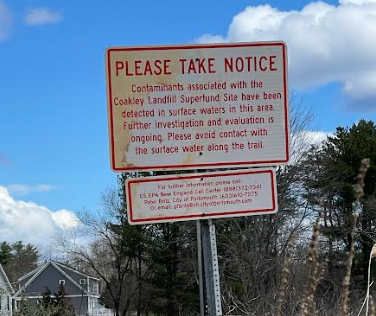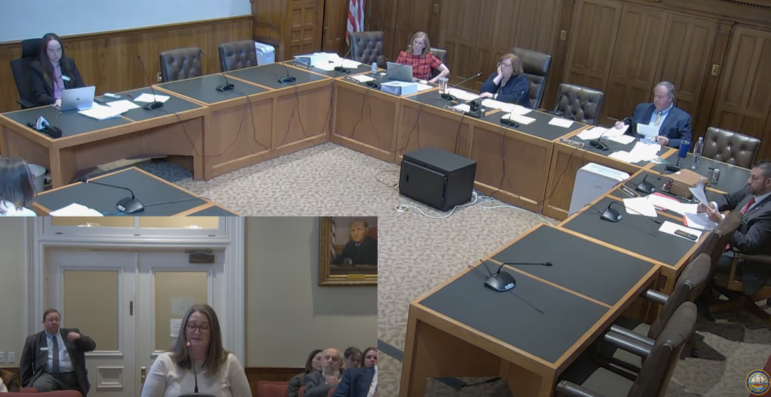Power to the People is a column by D. Maurice Kreis, New Hampshire’s Consumer Advocate. Kreis and his staff of four represent the interests of residential utility customers before the NH Public Utilities Commission and elsewhere.
By DONALD M. KREIS, Power to the People
In 1967, my dad bought a brand new, vomit green Pontiac Vista Cruiser station wagon with a black-trimmed roof. My siblings and I loved to sit all the way in the rear, facing backwards so we could ignore the parents as we motored around the highways and byways of the northern suburbs of New York.
The Arab Oil Embargo struck in 1973, gas prices soared, and we kids grew less enthusiastic about family travels as adolescence loomed. Two years after that, Dad bought a new and much smaller car.
How did he manage that, given our modest middle class means? Honestly, I don’t know – the family books were not open to me as a kid. But my father is a certified public accountant, so I am guessing that we, as a family, were paying depreciation charges.
In other words, to the extent a family is like a business – in the sense of needing to break even while meeting the needs of its “shareholders” – it’s important to budget for the wear and tear experienced by capital assets. I mean stuff like cars and buildings, such as the family home.
In accounting terms, that budget item is known as depreciation.
As the son of a CPA, you’ll never get me to admit that depreciation is boring. In fact, as the state’s ratepayer advocate, I’m here to testify that depreciation is the festering underbelly of utility regulation.
For a family car, depreciation is pretty straightforward – at least in concept. The Vista Cruiser had a useful life of eight years. So, the way to pay for the next car would be to include, in the annual family budget, one eighth of the purchase price of the 1967 Pontiac. Then, at the end of the eight years, there would be money in the bank to replace the station wagon.
Boy does this little thing called depreciation get complicated when applied to a natural gas, electric distribution, or water company.
For one thing, utilities are constantly replacing and updating their capital assets. So depreciation costs are always changing. And it’s almost never truly clear what the useful life of an existing asset really is. Useful life is the ugliest part of the festering underbelly that is the depreciation side of utility regulation.
Take for example an electric substation. A utility might build a new one for $20 million. You could put it into operation, and into rate base, with the assumption it has a useful life of 25 years. But what happens when, 15 years down the road, it becomes clear the substation will really last another 30 years (assuming a bit of maintenance and updating)? Then what?
You might say: Do nothing. But then customers taking service in years 26 through 40 of the useful life of the substation would arguably be getting free use of something that was paid for by the customers who took service in years 1 through 25.
Or, you could adjust the depreciation charges associated with the substation based on the remaining life of the substation. That’s a great idea, because although for some reason the Public Utilities Commission has historically resisted it.
Big bucks turn on how this depreciation stuff is straightened out. When Public Service Company of New Hampshire (also known as “Eversource”) filed its most recent rate case three years ago, the utility sought to recover more than $76 million in annual depreciation costs – fully 23 percent of its claimed operating expenses. (The accounting freaks out there can look at page 139 of this document – I added lines 48 and 49 of column H, and then rounded up, to get to that $76 milllion number. The operating expenses are on line 66.)
Depreciation has a sexy dance partner: book value. Sexy because “book value” is what determines the investment on which shareholders are entitled to a return, and as an item depreciates its book value declines accordingly.
For evidence of why this is important, consider the battle currently raging over Eversourse’s effort to gain the approval of the Public Utilities Commission of the utility’s deal with telecom giant Consolidated Communications. Eversource wants to buy out Consolidated’s interest in the utility poles it owns or co-owns in the Eversource territory.
The problem is the price Eversource has agreed to pay Consolidated – it’s way too generous. How do we know? Because if Consolidated were still a regulated utility like Eversource, the book value of the poles would be significantly less than the agreed-to purchase price.
In those circumstances, the risk is too great – at least for my taste – that many of Eversource’s customers would end up having paid twice for the same thing. First, via their telephone bills already paid (which presumably included depreciation costs associated with the poles) and again now, once the poles find their way into Eversource’s rate base at the price Eversource wants to pay for them.
Dad was a smart guy for trading in his ginormous gas-guzzling and fully depreciated Pontiac for a smaller and more fuel-efficient Audi (which, in 1975, was not quite the luxury brand it is today). Depreciation was a mighty thing then, and it’s a mighty thing now as applied to utility poles and other items paid for by the captive customers of electric, natural gas, and water utilities.





